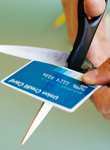 The U.S., which is normally a leader in innovation, has fallen behind when it comes to renovating payment methods. In the U.S., mobile payment transactions reached $112 billion by the end of 2016. Doesn’t that seem like an impressive number? Well, in China, mobile transactions totaled up to more than $5.5 trillion! New payment technologies, such as mobile payments, increase user engagement, in-app spending, and reduce the number of abandoned shopping carts. These payments are also more convenient and secure for the consumer. Even with all these benefits, America struggles to embrace new payment technology.
The U.S., which is normally a leader in innovation, has fallen behind when it comes to renovating payment methods. In the U.S., mobile payment transactions reached $112 billion by the end of 2016. Doesn’t that seem like an impressive number? Well, in China, mobile transactions totaled up to more than $5.5 trillion! New payment technologies, such as mobile payments, increase user engagement, in-app spending, and reduce the number of abandoned shopping carts. These payments are also more convenient and secure for the consumer. Even with all these benefits, America struggles to embrace new payment technology.
Despite the increased security and ease of use, U.S. consumers are hesitant to break away from their hard plastic and cash using ways. A big reason for Americans’ resistance is safety. In 2012, American retailers, banks, and card issuers lost $5.3 billion to credit card fraud, which comes out to almost half the global total. Since then, there have been public hacks that add to people’s concerns. The apparent risk of new payment technologies coupled with its seeming lack of value to U.S. consumers causes its widespread adoption to lag further behind.
The U.S. does not see enough benefits in new payment technologies. Updating payment systems is expensive for retailers and with so few customers taking advantage of “tap and go” and other recently developed technologies, there is not much of a reward. For consumers, mobile payments slice off 1 or 2 seconds during checkout time which is not enough of an incentive to take the time to set it up contactless payments in the first place. In the U.S., updating payment methods means you must have a phone capable of downloading a mobile wallet, then your card and bank need to be supported by the mobile wallet, and ultimately, there is no guarantee that every store will have updated their technology. In the long run, payment methods are being upgraded and will save time, but right now, consumers are not seeing the benefits.
As America falls behind, a leader in payment technology has emerged. Australia paves the road for other countries to follow. They have come out on top because they have established infrastructure and fully developed the market for contactless payments. More than 82 percent of Australians use tap and go to make payments every week. It has become a norm for the country and 33 percent of Australians are annoyed when a store does not offer tap and go (Mastercard). Contactless payments enhance the shopping experiences and retailers, small and large, have reason to offer the new technology.
Retailers in the U.S. can get started by offering new payment technologies to their customers. Although right now many consumers are slow to adopt, they will soon catch up and stores won’t want to be left behind the technology curve. Apple Pay is already supported by more than one-third of retailers in the U.S. and the number is growing. Add your business to the list of innovators who welcome new payment technologies.